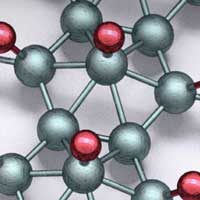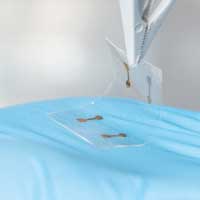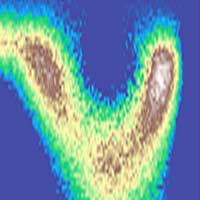 Scientists create stable nanosheets containing boron and hydrogen atoms with potential applications in nanoelectronics and quantum information technology.
Scientists create stable nanosheets containing boron and hydrogen atoms with potential applications in nanoelectronics and quantum information technology.
Monday, April 5, 2021
Less than a nanometer thick, stronger and more versatile than steel
 Scientists create stable nanosheets containing boron and hydrogen atoms with potential applications in nanoelectronics and quantum information technology.
Scientists create stable nanosheets containing boron and hydrogen atoms with potential applications in nanoelectronics and quantum information technology.
Artificial photosynthesis devices that improve themselves with use
 In a finding that could help make artificial photosynthesis a practical method for producing hydrogen fuel, researchers have discovered why a water-splitting device made with cheap and abundant materials unexpectedly becomes more efficient during use.
In a finding that could help make artificial photosynthesis a practical method for producing hydrogen fuel, researchers have discovered why a water-splitting device made with cheap and abundant materials unexpectedly becomes more efficient during use.
A new, positive approach could be the key to next-generation, transparent electronics
 Researchers have introduced ultrathin beta-tellurite to the two-dimensional (2D) semiconducting material family, providing an answer to this decades-long search for a high mobility p-type oxide.
Researchers have introduced ultrathin beta-tellurite to the two-dimensional (2D) semiconducting material family, providing an answer to this decades-long search for a high mobility p-type oxide.
Researchers detected non-negligible interactions between 2D materials and the substrates that physically support them
 A systematic study illustrates the crucial role that substrate interactions play in the physics of ultrathin films.
A systematic study illustrates the crucial role that substrate interactions play in the physics of ultrathin films.
Subscribe to:
Comments (Atom)
